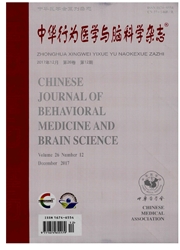

 中文摘要:
中文摘要:
目的评估“5.12”汶川大地震1个月后重灾区青少年的创伤后应激反应和抑郁障碍的严重性,并对其暴露因素进行相关分析,为早期心理干预提供依据。方法采用自编地震暴露问卷、创伤后压力反应症状量表(UCLA PTSD Index for DSM-Ⅳ)、儿童抑郁自评量表(DSRSC),对278名汶川地震重灾区青少年进行调查。结果青少年抑郁障碍检出率28.8%(80/278)。创伤后应激反应检出率23.0%(64/278),创伤后应激反应指数和抑郁自评量表总数呈显著正相关(r=0.707,P〈0.01)。青少年抑郁障碍的影响因素为:性别(r=0.227,P〈0.01)、以前对地震知识知道情况(r=-0.142,P〈0.05)、受伤/死亡的老师/同学与自己的关系(r=0.133,P〈0.05)。引起青少年创伤后应激反应的影响因素为:性别(r=0.207,P〈0.01)、受伤/死亡的老师/同学与自己的关系(r=0.159,P〈0.01)、地震时是否在楼内(r=-0.137,P〈0.05)、以前对地震知识知道情况(r=-0.122,P〈0.05)。结论发现重灾区青少年的心理健康状况受到一定影响,其影响程度与灾难暴露程度等因素显著相关;需要进一步进行相关的随访研究,从而最大限度地减少地震灾难对青少年带来的不利影响。
 英文摘要:
英文摘要:
Objective To evaluate the severity of the adolescents' s post-traumatic stress and depressive reactions of adolescents in the severe disaster areas 1 months after the 5.12 earthquake, and to find it' s exposure factors. Methods Based on the classes, using the earthquake exposure questionnaire that made by ourselves, UCLA PTSD Index for DSM-Ⅳ,Depression Self-rating Scale for Children(DSRSC) ;278 adolescents were investigated adopting stratified random cluster sampling method. Results The incidence of adolescents on depressive disorder was 28.8% (80/278) and the incidence on post-traumatic stress reaction was 23.0% (64/278). There were positively corrections between the reaction index of post-traumatic stress disorder and the scores of DSRSC (r = 0. 707, P 〈 0. 001 ). Depression in adolescents influencing factors were sex (r = 0.227, P 〈 0. 001 ) , his/her former knowledge of earthquake (r = -0. 142, P〈 0.05 ) ,the relation between the student and the hurt/dead teacher/classes(r = 0. 133, P 〈 0.05). Arising from post-tranmatic stress disorder of adolescents influencing factors were sex(r = 0.207, P 〈 0. 001 ) ,the relation between the student and the hurt/dead teacher/classes (r = 0. 159, P 〈 0.05 ), where he/she was when the earthquake happened(r = -0.137, P 〈 0.05 ) , his/her former knowledge of earthquake (r = -0. 122, P 〈 0.05 ). Conclusion The mental health of adolescents in the severe disaster areas are seriously impacted. There are significent corrections between the impact degree and the extent of disaster exposure. For further follow-up study will be explored in order to minimize the earthquake disaster on the negative impact of young people.
 同期刊论文项目
同期刊论文项目
 同项目期刊论文
同项目期刊论文
 期刊信息
期刊信息
